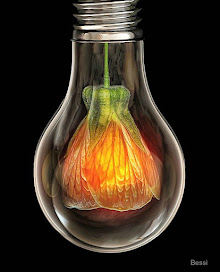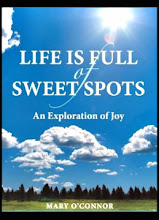
When it comes to baking with food grade essential oils there is little in the way of guidance for the uninitiated. Food grade essential oils are highly concentrated. Though used sparingly they are capable of producing deeply nuanced effects that are as memorable as they are delicious. Food grade absolutes are also available to bakers, but these are even more concentrated than food grade essential oils. Confused? Glass Petal Smoke will clear things up so you can expand your flavor horizons in time for the holidays.
 Food grade essential oils are not new to the market. Boyajian and LorAnn meet traditional flavor needs, which include nature-identical flavors. Williams Sonoma offers a curated selection of Mandy Aftel's "Chef's Essences" which include; nutmeg, basil, black pepper, ginger, and yuzu food grade essential oils. Aftel, who single-handedly started the trend in natural perfumery, was selling food grade essential oils to chefs before flavor materials were available for purchase on Aftelier.com. Once she added these flavor materials to her palette of offerings molecular gastronomists and mixologists couldn't resist using them. The effect on consumers familiar with these types of flavorants was no different.
Food grade essential oils are not new to the market. Boyajian and LorAnn meet traditional flavor needs, which include nature-identical flavors. Williams Sonoma offers a curated selection of Mandy Aftel's "Chef's Essences" which include; nutmeg, basil, black pepper, ginger, and yuzu food grade essential oils. Aftel, who single-handedly started the trend in natural perfumery, was selling food grade essential oils to chefs before flavor materials were available for purchase on Aftelier.com. Once she added these flavor materials to her palette of offerings molecular gastronomists and mixologists couldn't resist using them. The effect on consumers familiar with these types of flavorants was no different..jpg) Food grade essential oils and absolutes are highly concentrated. If they aren't properly diluted they can erode the lining of the esophagus and damage tooth enamel. Understanding how to use them in a recipe is both an exercise in flavor creation and safety. How can something safely used
in dilution be problematic at full strength? Concentrated essential oils are capable of behaving as solvents—which
is why perfume and
flavor extracts are diluted in alcohol or food grade glycerin. Want a more tangible example? Consider orange oil cleaners sold in supermarkets and health
food stores. They
don't cut through grease because they are "natural"; concentrated essential oil of orange cuts through grease because solvents break things down. This is not meant to engender fear of using food grade essential oils; it is meant to inform a common sense approach to proper dosing of flavorants while instilling a healthy respect for chemistry.
Food grade essential oils and absolutes are highly concentrated. If they aren't properly diluted they can erode the lining of the esophagus and damage tooth enamel. Understanding how to use them in a recipe is both an exercise in flavor creation and safety. How can something safely used
in dilution be problematic at full strength? Concentrated essential oils are capable of behaving as solvents—which
is why perfume and
flavor extracts are diluted in alcohol or food grade glycerin. Want a more tangible example? Consider orange oil cleaners sold in supermarkets and health
food stores. They
don't cut through grease because they are "natural"; concentrated essential oil of orange cuts through grease because solvents break things down. This is not meant to engender fear of using food grade essential oils; it is meant to inform a common sense approach to proper dosing of flavorants while instilling a healthy respect for chemistry. If you are going to add "food grade" essential oils to your recipes use them in the same dilution as store bought flavor extracts, which are dosed between one and three percent. A one percent dilution is one drop of "food grade" essential oil to 100 drops of grain alcohol. A three percent dilution is three drops of "food grade" essential oil to 100 drops of grain alcohol. Once you prepare a diluted form of the food grade essential oil you can use it in your recipe as you would any store bought extract; by the teaspoonful. Be patient with yourself and your recipes as you will be learning to add flavor in a whole new way.
 Food grade essential oils can also be directly added to fats in a recipe. This method can be applied once you have a handle on working with food grade essential oils diluted in alcohol. Butter is an ideal medium for food grade essential oils as creaming butter allows for the even distribution of flavor. A good range for adding food grade essential oils to butter is 1-3 drops of food grade essential oil to recipes calling for one quarter to one cup of butter (4 tablespoons - 2 sticks). Some essential oils, like lime and bergamot, can be used with a heavier hand (4 - 8 drops) because they are more volatile, (which is why they are categorized as top notes in perfumery). Anything more than these prescribed amounts and you might wind up with pastry that tastes like air freshener.
Food grade essential oils can also be directly added to fats in a recipe. This method can be applied once you have a handle on working with food grade essential oils diluted in alcohol. Butter is an ideal medium for food grade essential oils as creaming butter allows for the even distribution of flavor. A good range for adding food grade essential oils to butter is 1-3 drops of food grade essential oil to recipes calling for one quarter to one cup of butter (4 tablespoons - 2 sticks). Some essential oils, like lime and bergamot, can be used with a heavier hand (4 - 8 drops) because they are more volatile, (which is why they are categorized as top notes in perfumery). Anything more than these prescribed amounts and you might wind up with pastry that tastes like air freshener. Notice the repeated specification of "food grade" essential oils in this post? Essential oils that are generally recognized as safe (GRAS) by the FDA (section 582.20 of the FDA code) are not essential oils sold in health food stores for aromatherapy and scenting the skin, (even if they are labeled as "natural"). If you are going to use "food grade" essential oils check the FDA list regularly and make sure that the food grade essential oil you plan on purchasing is on the GRAS list. Organic "food grade" essential oils are highly recommended. Concentrated absolutes (stronger than essential oils) sold as essences for flavor application may contain trace amounts of hexane, a solvent used in the aroma extraction process that is a known neurotoxin. CO2 extracted absolutes (made using Supercritical carbon dioxide) are a better choice for flavor application as the extraction process allows the character of the raw material to come though in all its subtleties. Supercritical carbon dioxide is safe and kind to the environment so your purchasing choice respects the planet and palates of those who eat your pastry.
Feel like expanding your flavor horizons using food grade essential oils? Glass Petal Smoke has three cookie recipes that are perfect for the holiday season; Frankincense Shortbread, Orange Blossom Crumiri, and Bergamot Crumiri. The dough base in all of these cookie recipes can be tweaked to accommodate flavors that inspire your imagination. All you have to do is make adjustments where existing citrus zest, extracts and food grade essential oils are used. P.S. If you prefer to go gluten-free you can use the pastry base in Glass Petal Smoke's Persian Shortbread recipe and tweak for flavor.
Notes:
When you work with food grade essential oils make sure to purchase disposable plastic pipettes. Bottles with built-in droppers can get clogged and don't allow you to measure with precision. Some food grade essential oils don't come in dropper bottles so you'll need disposable pipettes. Glass droppers can be used if they are dedicated to a single flavor material only and are cleaned thoroughly after use.
Visit Aftelier.com for exclusive Chef's Essences that aren't available on the Williams Sonoma website.
Aroma: The Magic of Essential Oils, a cookbook by Mandy Aftel and Daniel Patterson, is out of print. The book contains sweet and savory recipes that include food grade essential oils. Glass Petal Smoke recommends buying a used copy for reference as it is co-authored by a perfumer and a chef.
Painting of Laboratorio by Remedios Varo.
Creating tinctures is another way to add flavor to food. Herbalists have used this type of essence creation for centuries as alcohol extracts the aromatic and medicinal aspects of tinctured material. If you've made vanilla extract you have dabbled in tincturing. Want to know more about tincturing? Stay tuned. That's a future flavor post on Glass Petal Smoke.





